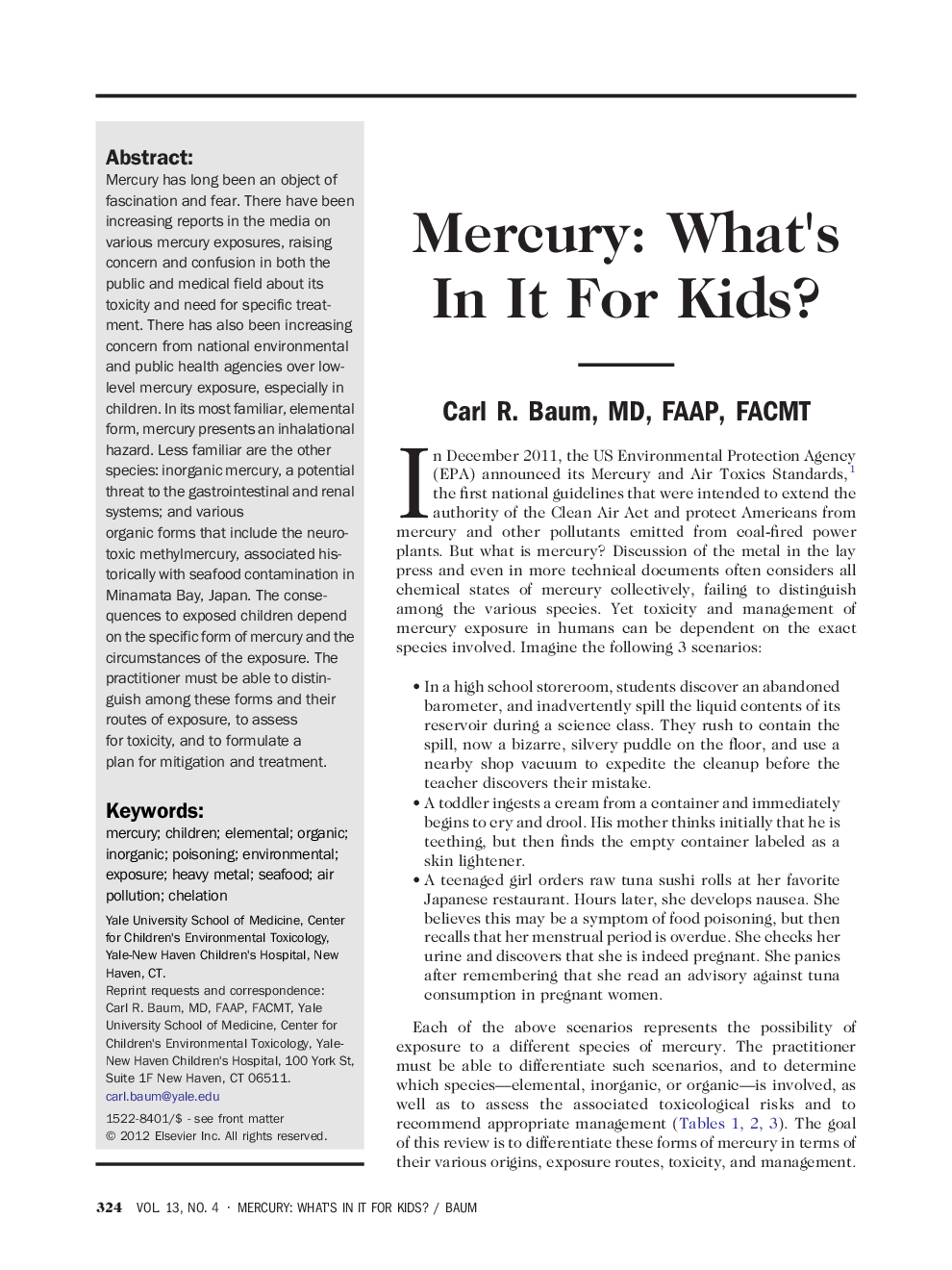| Article ID | Journal | Published Year | Pages | File Type |
|---|---|---|---|---|
| 3236031 | Clinical Pediatric Emergency Medicine | 2012 | 7 Pages |
Mercury has long been an object of fascination and fear. There have been increasing reports in the media on various mercury exposures, raising concern and confusion in both the public and medical field about its toxicity and need for specific treatment. There has also been increasing concern from national environmental and public health agencies over low-level mercury exposure, especially in children. In its most familiar, elemental form, mercury presents an inhalational hazard. Less familiar are the other species: inorganic mercury, a potential threat to the gastrointestinal and renal systems; and various organic forms that include the neurotoxic methylmercury, associated historically with seafood contamination in Minamata Bay, Japan. The consequences to exposed children depend on the specific form of mercury and the circumstances of the exposure. The practitioner must be able to distinguish among these forms and their routes of exposure, to assess for toxicity, and to formulate a plan for mitigation and treatment.
